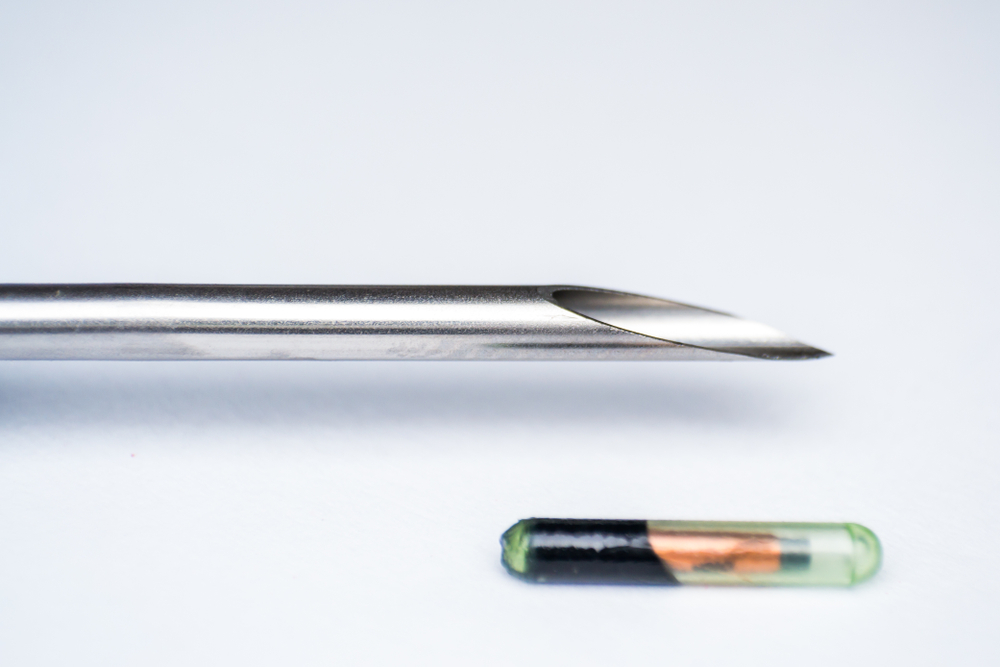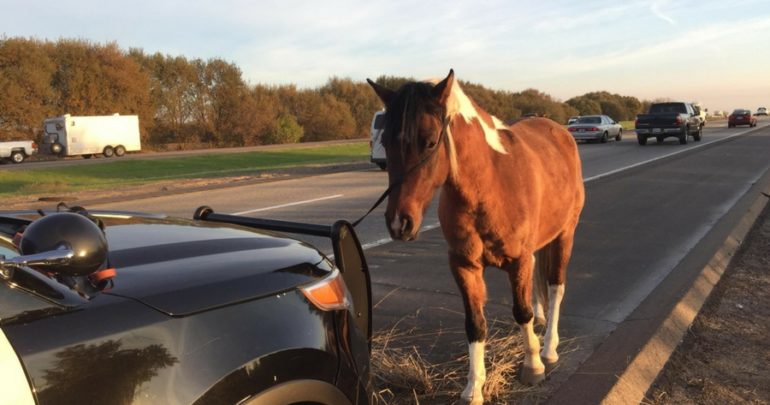Tuesdays with Tony
This Florida cat knows better than to try to reason with hurricane season, and so should you. This week, there is talk of watching the tropics, so I decided to bring up an important component protecting your horse in times of natural disasters or other adverse events – microchip identification.
If you love your horse as much as most of the owners that come to my clinic, you want to do everything you can to protect him. While there are things we can’t control about our horses’ health, providing a safe and reliable means of identifying them is sooo easy to do. A microchip is a solid way of proving ownership, not only in severe weather events where horses could go missing, but also in situations of theft or ownership disputes. In addition, many breed registries and show organizations require microchips nowadays.
What it is:
A microchip is a tiny device about the size of a grain of rice that is implanted into your horse’s neck, under his mane, with a needle. The chip contains a 15-digit numerical code that is unique to your horse. It’s like the VIN number your car has, but for your horse. The number can’t be changed and is a reliable way to identify a horse. Once it’s inserted, anyone with a microchip scanner can read the number and look up the registration information to find out how to contact the owner.
Why it’s useful:
Microchips are a better method of identification than lip tattoos or brands. Have you tried deciphering a thoroughbred’s lip tattoo? It can be a guessing game, especially as the horse gets older. Brands can also be difficult to read, and they’re not usually unique to individual horses. Also, both can be altered.
Microchips are very common in dogs and cats, it’s often part of the routine healthcare performed when getting a new pet. There are many, many stories of lost or stolen pets being reunited with their families thanks to a chip, sometimes even years after going missing. While horses don’t wander off as often as we cats do, in the case of natural disasters or weather events, horses may have to be left outside and recovered after the danger has passed. They may end up a distance away from home. Rescuers attempting to reunite a displaced horse with its owner have quite a challenge. Think about how many bay geldings you know – I bet it’s a lot. But any horse with a microchip can be quickly and easily returned to its owner.
A microchip can be a great way of protecting your interests if you are buying or selling horses. A vet doing a pre-purchase exam on a horse can also make sure they have been presented with the correct horse to examine, protecting you as the buyer from potential fraud. On the other hand, when you sell a horse there is always some uncertainty about where your horse will wind up in the future. Equine rescue groups working with horses that have fallen on hard times can trace back the horse’s identification and potentially reunite them with a previous owner. Microchips can also be used to solve disputes about horse ownership. If you have a record of a horse’s microchip that lists you as the legal owner, you have a much stronger case to prove the horse is yours. Organizations such as the Equine Rescue Network are working to supply microchip scanners and volunteers to scan horses at auctions that may ship horses for slaughter. If the horse is microchipped, there is a chance the previous owner of a stolen or slaughter-bound horse may be able to be reached.
As if all those reasons weren’t enough, many major breed registries and show organizations now require horses be microchipped with the 15-digit International Organization of Standardization (ISO) chips for identification. These include, just to name a few, the Fédération Equestre Internationale (FEI), the Jockey Club, the United States Equestrian Federation (USEF), the United States Hunter Jumper Association (USHJA) and the Retired Racehorse Project Thoroughbred Makeover.
How it’s done:
It’s really not a big deal to put it in. Really, it’s downright easy. I have one myself, and I didn’t even feel the need to bite the vet when she did it.
In horses, the microchip is implanted in the nuchal ligament on the left side of the neck, halfway between the poll and the withers, just below the base of the mane. My docs will do a sterile prep to make sure things are nice and clean, and then use a thingy that looks like a syringe and needle to put in the chip. It’s super quick and doesn’t take much longer than giving a vaccine. Depending on your horse’s personality, he may prefer a bit of sedation or some local anesthetic over the injection site. The chip is tiny and inert, so the vast majority of horses have no reaction to it, though a few might have a small swelling for a few days after insertion. The benefit of microchipping your horse definitely outweighs any risk.
After it’s in, my doc will wave a little hand-held scanner over your horse’s neck and make sure it reads the chip and then Presto! your horse is legit. Here’s a video of the insertion part of the process: https://www.youtube.com/watch?v=LkwHe7t-VKY
My docs will make sure to use to use the approved ISO-compatible chips and record the number in your horse’s medical records. Then it’s up to you to register the code with your contact info and give the number to any breed registries or show organizations you belong to.
And what does this peace of mind cost? Hundreds? Thousands? Nope, it’s usually around $50 – $75 for the chip and the implantation, plus a little extra if your horse needs sedation or a farm call. Microchips usually last at least 25 years, so if that isn’t a good deal, I don’t know what is!
Here’s what it does:
- Provides permanent identification that can’t be separated from your horse or changed
- Helps recovery of your horse during a disaster
- Helps prevent theft and fraud
- Provides accurate identification for sales documentation
- Provides accuracy for competitions and breed registries (and is often required)
Here’s what it doesn’t do:
- It’s not a GPS tracker for your horse. You won’t be able to follow the chip to find his real-time location. (There are other devices that can do that though)
- The microchip itself stores only the horse’s identification number. Your contact info and info you enter about your horse is stored through the online registry when you register the chip. That’s why the registration after the chip is implanted is critical. Failing to register the chip, update your contact info, or transfer records basically renders the chip useless.
- There is no power supply (none is needed)
- Unlike in cats and dogs, microchips implanted in the nuchal ligament generally do not migrate away from the implantation site.
- Chips are not a fail-safe that your horse will never end up in a bad situation. Slaughterhouses and auctions don’t routinely scan horses for microchips. Though like I said, equine rescue organizations are working to make this more commonplace.
So, don’t wait until you are facing a situation where a chip could have helped you, because then it is too late. Microchip implantation is simple, safe, simple, and inexpensive. It’s an easy way to protect your horse that will last his entire life.
Until next week,
Tony
P.S. This is one part of disaster prep for your farm, but with hurricane season picking up, you might want to look over some of my other sage advice on this topic! You can click on the magnifying glass at the top of the page and type “hurricane prep” into the search bar and it will show you all my blogs on this topic. Tired of reading? Click here to listen to my doc’s podcast on emergency preparation. You might have to scroll down the list to find it, but I bet you’ll find some other ones you want to listen to, so it’s all good
Tuesdays with Tony is the official blog of Tony the Clinic Cat at Springhill Equine Veterinary Clinic in Newberry, Florida. If you liked this blog, please subscribe below, and share it with your friends on social media! For more information, please call us at (352) 472-1620, visit our website at SpringhillEquine.com, or follow us on Facebook!
[jetpack_subscription_form title="Subscribe to Whinny's Wisdoms"]



